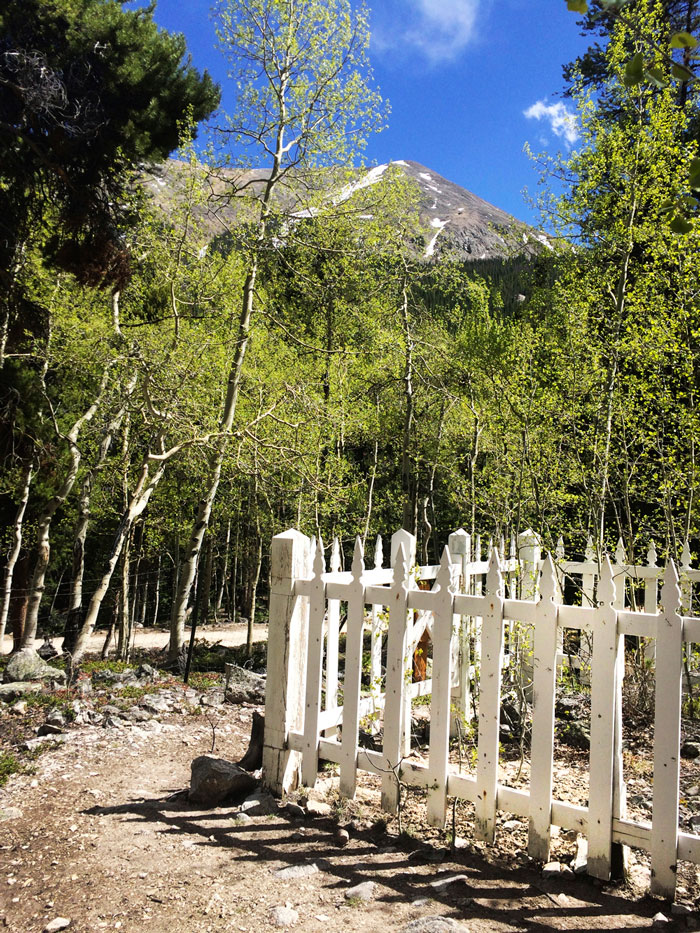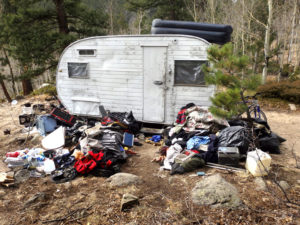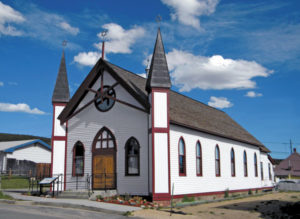By Mike Rosso
The old mining town of St. Elmo is a very popular Chaffee County attraction for those seeking a glimpse into Colorado’s past, but there are also several other noteworthy historic sites nearby.
First is the Iron City Cemetery. A rather sparse burial ground, there are a few headstones made of granite, but many are composite and added long after the initial burial.
A roster is posted at the entrance to the cemetery listing all those buried there as well as the date and cause of death. For instance, Dr. T.H. Hodges – from Iowa – who died in September 1881, was found frozen to death 1.5 miles above nearby Hancock. Robert E. Sheldon, age 20, fell into a mill hole at Mary Murphy Mine in September 1898. Nathan Ray, who died of typhoid pneumonia in 1885, was an early settler and miner, marshal, constable and deputy sheriff of nearby Alpine. Overall there are approximately 50 souls buried there, including a number of infants and several members of the Carey family.
[InContentAdTwo]
When the Forest Service opened a campground nearby in the mid-70s, its proximity to the cemetery took a big toll; a wrought iron fence surrounding the cemetery was stolen and the old wooden headstones were used for firewood in the camp’s fire pits, according to Melanie Roth, president of Historic St. Elmo & Chalk Creek Canyon, Inc. The Forest Service also required the removal of at least five original cabins from the campground site. Some were relocated, others destroyed.
In the mid-1980s, Mildred Hardgrove, a part time resident of St. Elmo, spearheaded an effort to replace the missing grave markers and found a grange organization in Elizabeth, Colorado willing to help do just that. The composite grave markers are still in place today.

Iron City itself was a smelter town which lasted only about two years. In 1900, a flood took out much of the town, but mining remnants can still be found nearby. The burial grounds are on a quiet hillside with aspen trees and beautiful views of nearby mountain peaks. It is a lovely spot to sit and contemplate the days of these early settlers who lived their lives in a rather harsh environment.
Just up the road from the cemetery is the impressive Iron City Cabin. Built in 1881, the two-story cabin is owned by the U.S. Forest Service and has had two close calls in its existence.
First, it survived the flood in the early 1900s that took out the remains of Iron City. In the latter 20th century, a forest engineer determined that the cabin needed extensive repairs, and, unable to justify expensive restoration, the Forest Service let the building sit and deteriorate further, according to former San Isabel National Forest information specialist Ann Ewing.
The first floor is constructed of V-notched logs, and around 1890, local miner Henry Brown added a more elaborate wood frame second floor with elements of Queen Anne architecture with stepped-cornice moldings and fish scale shingle siding.
With the encouragement of local citizens, the cabin was restored and preserved with the help of Back Again Restorations, the Salida Ranger District, the Buena Vista Heritage Museum, the State Historical Fund, and volunteers with the U.S.F.S. Passport in Time project.
Getting there: From U.S. Hwy. 285, drive west on CR 162 (Chalk Creek Drive), past Mt. Princeton Hot Springs resort. Just before St. Elmo, turn right onto CR 292 and drive through the campground. The cabin is on the left, as is the cemetery, a bit further up the road.




